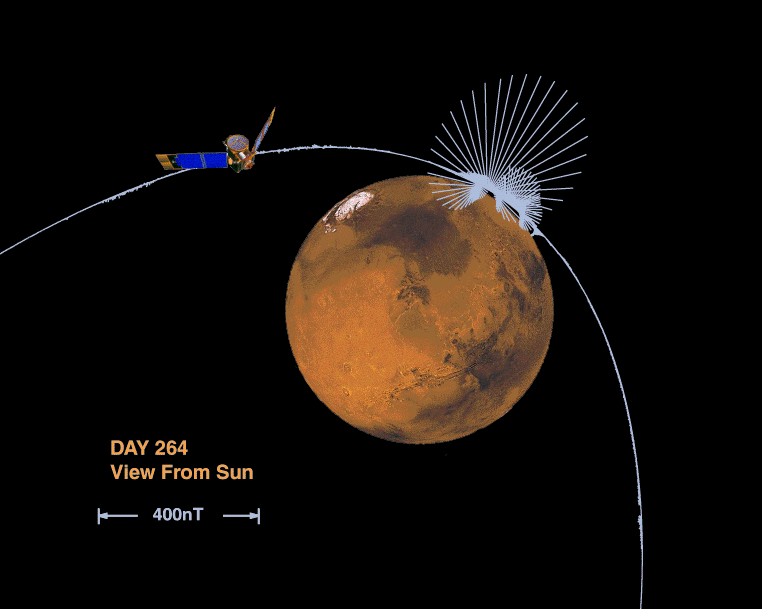
Mars Global Surveyor Magnetic Field Experiment
MGS Press Conference, 2 October 1997, Figure
Speech given by Dr. Jack Connerney, AstrophysicistThis image shows the orientation and magnitude of the magnetic field measured by the MGS magnetometer as it sped over the surface of Mars during an early aerobraking pass (Day of the year, 264; "P6" periapsis pass). At each point along the spacecraft trajectory we've drawn vectors in the direction of the magnetic field measured at that instant; the length of the line is scaled to show the relative magnitude of the field. Imagine traveling along with the MGS spacecraft, holding a string with a magnetized needle on one end: this is esentially a compass with a needle that is free to spin in all directions. As you pass over the surface the needle would swing rapidly, first pointing towards the planet and then rotating quickly towards "up" and back down again. All in a relatively short span of time, say a minute or two, during which time the spacecraft has traveled a couple of hundred miles. You've just passed over one of many "magnetic anomalies" thus far detected near the surface of Mars. A second major anomaly appears a little later along the spacecraft track, about 1/4 the magnitude of the first - can you find it? The short scale length of the magnetic field signature locates the source near the surface of Mars, perhaps in the crust, a 10 to 75 kilometer thick outer shell of the planet (radius 3397 km).







